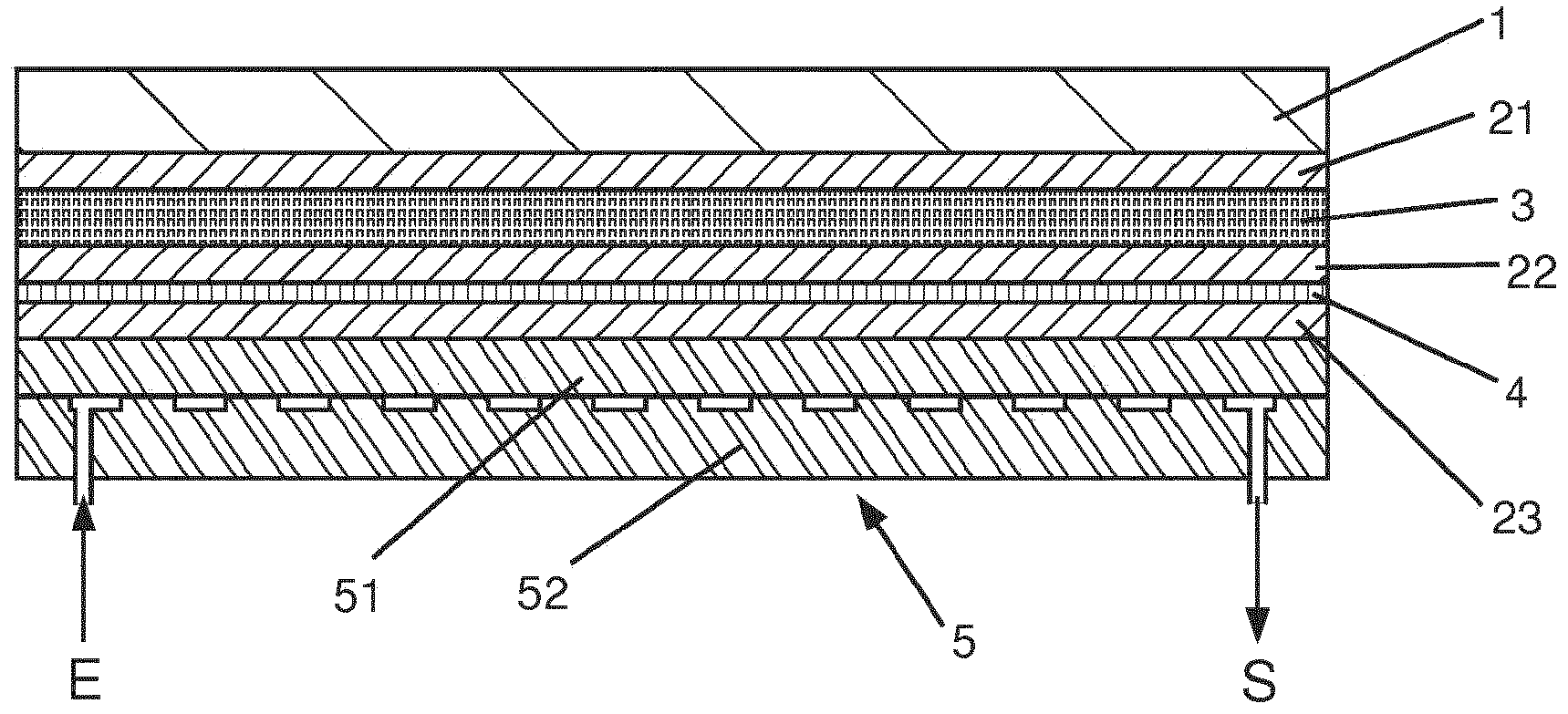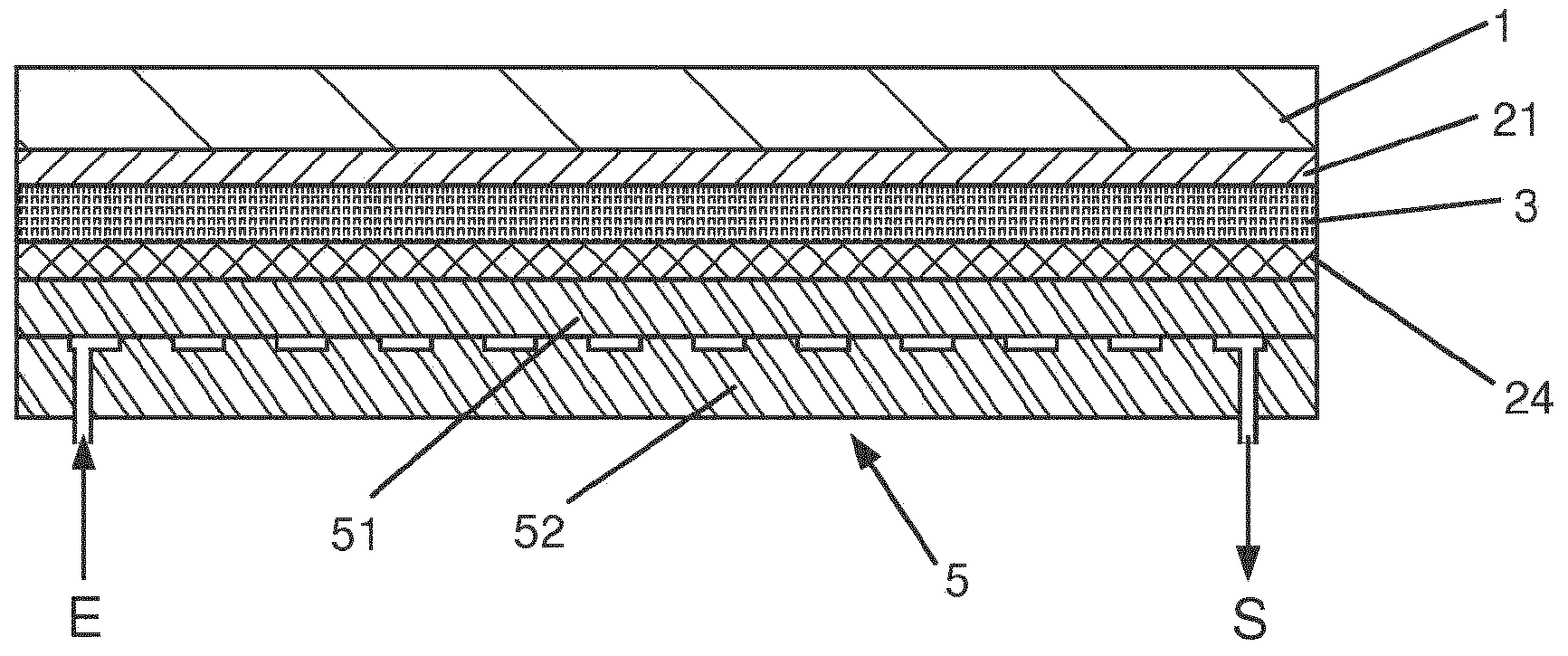Improving longevity and ergonomics of hybrid solar modules
A solar module, solar energy technology, applied in the field of improving the life and output of the system, can solve the problems of unsuitability for roofs, heavy exchangers, etc., and achieve the effects of improving conversion efficiency, avoiding assembly costs, and improving conversion efficiency
- Summary
- Abstract
- Description
- Claims
- Application Information
AI Technical Summary
Problems solved by technology
Method used
Image
Examples
Embodiment Construction
[0050] A solar panel according to the invention is a hybrid solar module capable of generating electrical and thermal energy from solar energy. It is intended to be used alone or in combination with other similar modules within the installation, so that the energy generated by said panels should be usable, for example and in a non-limiting way, for dwellings. Conventionally, a hybrid solar module can be defined as an assembly of a photovoltaic solar module and a heat exchanger ( 5 ).
[0051] refer to Figure 1a , hybrid solar modules rely on photovoltaic modules to convert a portion of the received solar energy into electrical energy. Said photovoltaic module consists of a plurality of photovoltaic elements (3) usually crystalline silicon semiconductors, thin layers of semiconductors or any other technology capable of realizing the photovoltaic effect. These photovoltaic elements (3) are connected electrically in series or in parallel and are assembled, for example and in a ...
PUM
 Login to View More
Login to View More Abstract
Description
Claims
Application Information
 Login to View More
Login to View More - R&D
- Intellectual Property
- Life Sciences
- Materials
- Tech Scout
- Unparalleled Data Quality
- Higher Quality Content
- 60% Fewer Hallucinations
Browse by: Latest US Patents, China's latest patents, Technical Efficacy Thesaurus, Application Domain, Technology Topic, Popular Technical Reports.
© 2025 PatSnap. All rights reserved.Legal|Privacy policy|Modern Slavery Act Transparency Statement|Sitemap|About US| Contact US: help@patsnap.com



